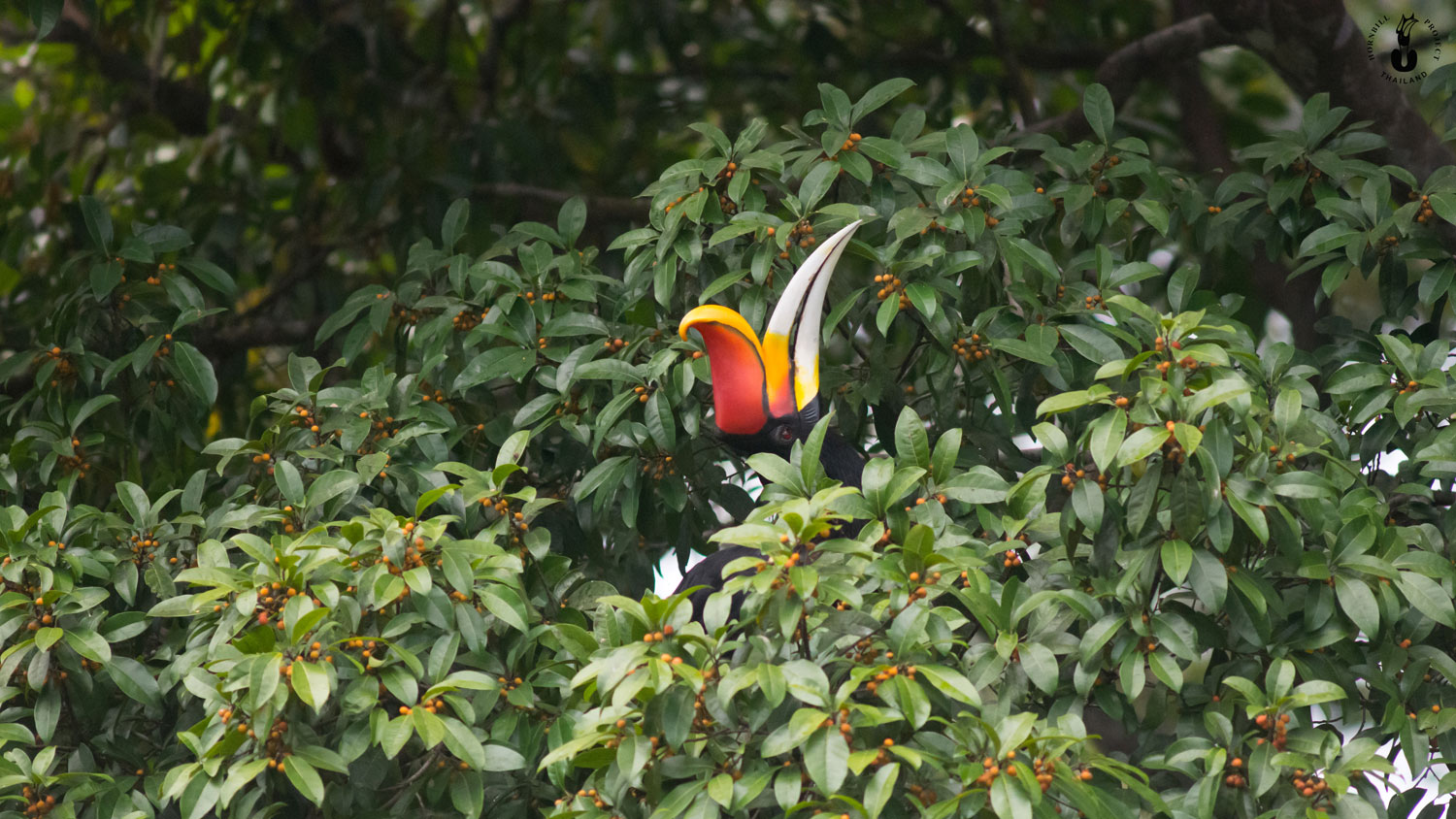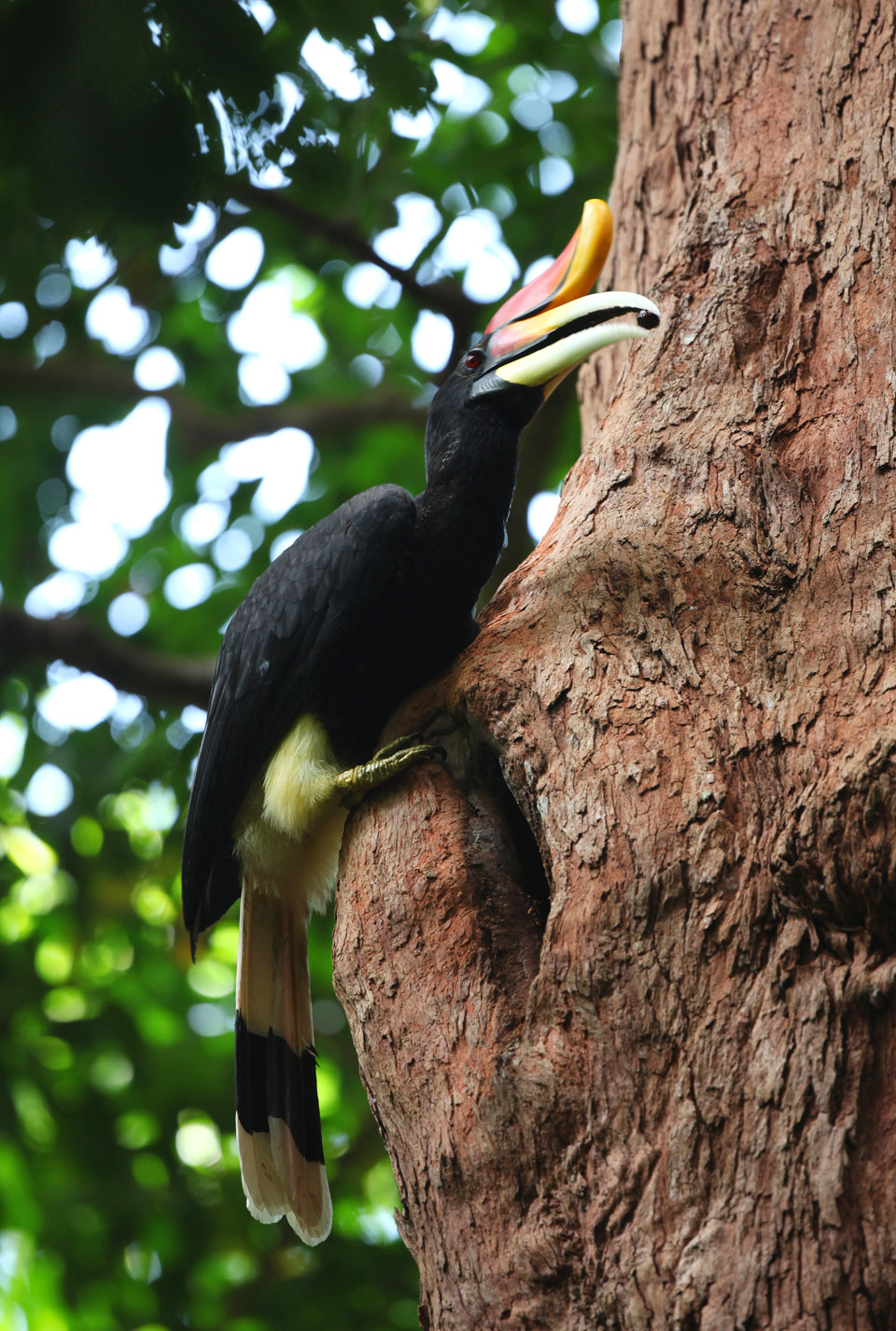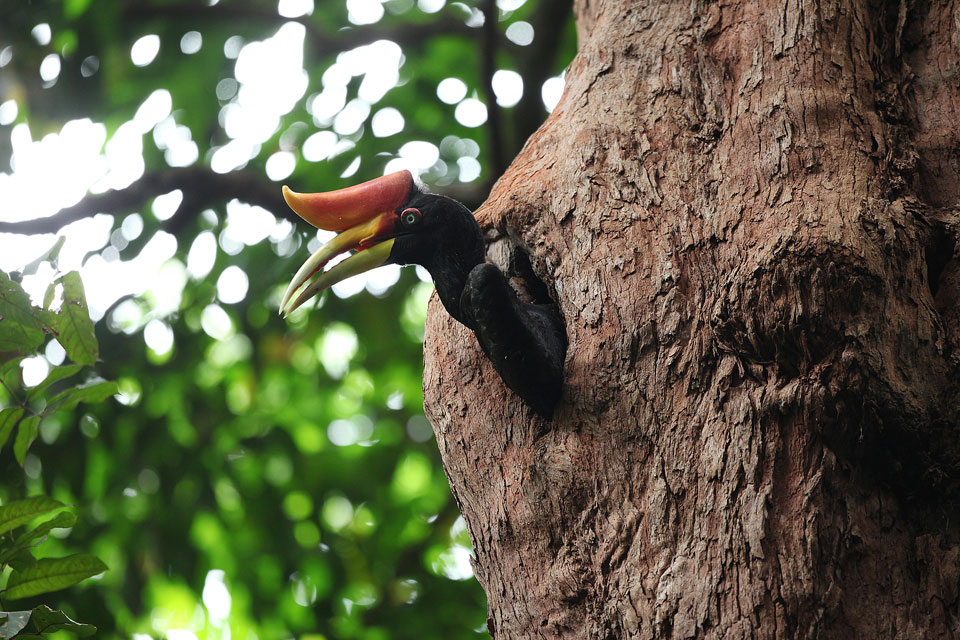Found in extensive tracks of primary Sundaic rainforest; extends into mature secondary forest, and occasionally seen flying over disturbed areas or plantations to and from feeding grounds.
Form sea level and coastal swamp forest into lower montane forest,recorded to 1,400 m elevation. Feeds lipid-rich capsules and drupes. In a tropical rainforest of southern Thailand, among non-fig fruit Polyalthai (Annonaceae), Aglaia (Meliaceae) and Oncosperma horridum (Arecacae) are dominant.
Also takes animal food on an opportunistic basic,often below the canopy, and especially during the breeding season to feed protein to the young. Prey includes invertebrate animals as well as lizards,rodents, tree frogs and bird eggs.
In a survey from southern Thailand published in 2011, it was found that food per weight brought to was found to the nest, 72% was figs, 24% other fruits and 4% animal prey, with 63g/obs.hr delivered to nests.
It is largely sedentary and usually seen in pairs on small family groups feeding high in the canopy of large forest trees; outside of the breeding season it may travel in search of fruiting trees, particularly figs, and flocks of up to 25 birds, often mainly immatures, might from.




